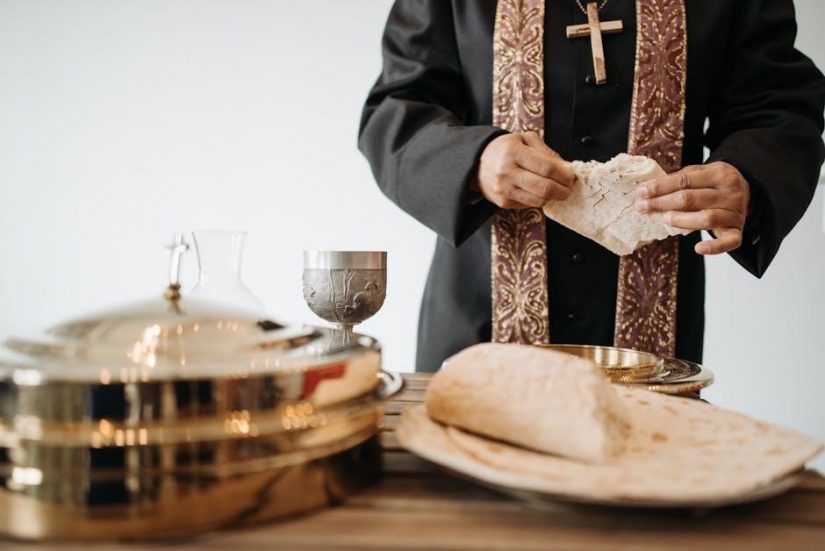The high priest’s garments, intricately designed with symbolic colors and craftsmanship, represented divine authority and spiritual connection. They embodied purity, royalty, and heaven’s presence, serving as a bridge between the earthly and divine realms.
Overview of the High Priest’s Role
The high priest served as a mediator between God and the Israelites, performing sacred rituals and maintaining ritual purity. Their garments symbolized divine authority and spiritual connection, embodying purity, royalty, and heavenly presence. The high priest’s role was central to atonement, offering sacrifices, and ensuring the community’s spiritual well-being. The garments were not just attire but sacred tools, reflecting their divine service and the covenant between God and His people, while also symbolizing Jesus Christ’s priesthood, representing a transfiguration of the Levitical order.
Significance of Garments in Religious Rituals
The high priest’s garments held profound significance in religious rituals, serving as tools for divine service and maintaining ritual purity. Their intricate designs, colors, and craftsmanship symbolized spiritual connection and heavenly representation. The garments were not merely ornamental but carried deep symbolic meanings, such as blue representing heaven, purple signifying royalty, and white embodying purity. These colors mirrored those of the sanctuary, reinforcing the priest’s role as a mediator. The garments also served as a visual reminder of God’s covenant with His people, emphasizing the sacred nature of their rituals and the priest’s divine authority in facilitating worship and atonement.
Symbolism in Ancient Texts and Artifacts
Ancient texts and artifacts reveal the deep symbolic meaning of the high priest’s garments, rooted in divine command and spiritual purpose. The Ephod and Breastplate, detailed in Exodus, were adorned with precious stones and colors symbolizing heaven, royalty, and sacrifice. These elements were not merely decorative but carried profound spiritual significance, reflecting God’s covenant with Israel. The garments were described as “sacred equipment,” emphasizing their role in rituals and divine service. Their intricate designs and materials, such as fine linen and gold, underscored the priest’s sacred mission as a mediator between God and His people, embodying purity, authority, and divine presence.
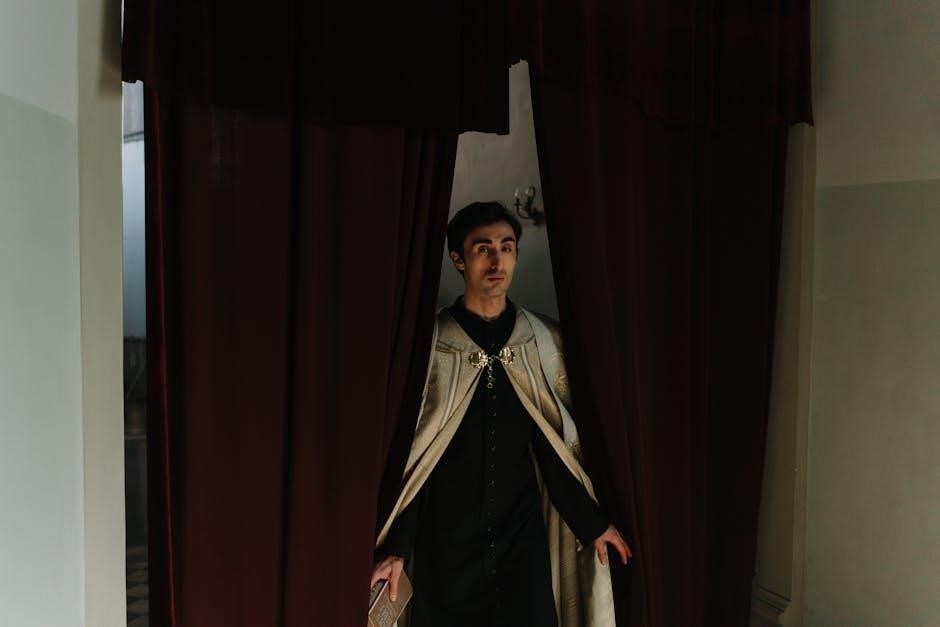
Historical Context of High Priest Garments
The high priest’s garments originated in Exodus, crafted under divine command to reflect spiritual identity and authority, with enduring significance across centuries in religious rituals and divine connection.
Descriptions in Exodus and Leviticus
In Exodus 28 and Leviticus 8, the high priest’s garments are meticulously described, emphasizing their divine design and purpose. Exodus 28 details the ephod, breastplate, robe, and mitre, crafted with gold, blue, purple, and scarlet yarns, symbolizing divine authority and holiness. Leviticus 8 describes the consecration of these garments, marking the priest’s sacred role. These texts highlight the garments’ intricate design, reflecting heaven’s splendor and the priest’s intercessory function. The descriptions underscore the garments’ spiritual significance, linking them to ritual purity, divine presence, and the priest’s responsibility to mediate between God and Israel.
Materials and Craftsmanship Involved
The high priest’s garments were crafted from the finest materials, including gold, blue, purple, and scarlet yarns, and fine linen, as detailed in Exodus 28 and 39. Precious stones like onyx and jasper were engraved with the names of Israel’s tribes. Skilled artisans, divinely appointed, wove and embroidered the fabrics, reflecting exceptional craftsmanship. The use of durable materials ensured longevity, symbolizing the enduring nature of divine service. The intricate designs and precise stitching underscored the garments’ sacred purpose, emphasizing the high priest’s role as a mediator between God and humanity.
Cultural and Religious Influences on Design
The design of the high priest’s garments was profoundly shaped by cultural and religious influences. The use of gold, blue, purple, and scarlet yarns reflected the wealth and status associated with sacred office, while fine linen symbolized purity. Precious stones like onyx and jasper, engraved with tribal names, highlighted Israel’s unity under God. The intricate embroidery and weaving techniques mirrored the artistic craftsmanship of the ancient Near East. Religious directives from Exodus and Leviticus ensured the garments embodied divine instructions, blending cultural artistry with spiritual purpose to create a visual representation of the priest’s role as a mediator between God and humanity.
Garment Descriptions and Their Symbolism
The high priest’s garments symbolized divine connection and authority. Each piece, like the Ephod, Breastplate, and Robe, bore specific colors and designs signifying spiritual roles and sacred duty.
The Ephod and Its Spiritual Significance
The Ephod, a intricate vestment, symbolized the high priest’s divine connection and authority. Made from gold, blue, purple, and scarlet threads, it represented heaven’s splendor. The Ephod held the breastplate with twelve stones, each engraved with a tribe’s name, signifying the priest’s role in interceding for Israel. Its craftsmanship reflected God’s precise instructions, ensuring holiness. The Ephod was worn during rituals to seek divine guidance, emphasizing its spiritual purpose. It embodied the priest’s responsibility to mediate between God and humanity, making it a cornerstone of sacred service and divine communication.
The Breastplate of Judgment and Its Meaning
The Breastplate of Judgment, a key part of the high priest’s attire, symbolized divine wisdom and justice. It was crafted with gold, blue, purple, and scarlet threads, representing heaven, royalty, and sacrifice. The breastplate held twelve precious stones, each engraved with a tribe of Israel, signifying unity and divine governance and purpose. Placed over the heart, it emphasized decisions guided by divine compassion. The breastplate, along with the Urim and Thummim, was a tool for seeking God’s will, ensuring that leadership was divinely inspired. Its intricate design reflected the sacred responsibility of guiding the community according to God’s principles.
The Robe of the Ephod and Its Symbolic Colors
The robe of the Ephod, made of blue yarn, symbolized heaven and God’s divine presence. Its design emphasized the high priest’s role as an intermediary between God and humanity. The robe’s color represented purity, trust, and loyalty, reflecting the heavens’ incorruptible nature. The blue fabric also signified the priest’s spiritual connection to the divine realm. Along with the robe, the bells and pomegranates on its hem symbolized truth and righteousness, ensuring the priest’s actions aligned with God’s will. Together, the robe’s color and design underscored the priest’s sacred duty to serve as a bridge between heaven and earth.
The Head Plate and Its Inscription
The high priest’s head plate, made of gold, bore the inscription “Holiness to the Lord,” signifying the priest’s consecration to divine service. Its placement on the forehead symbolized the priest’s commitment to holy thoughts and actions. The gold material represented divine royalty and authority, while the inscription emphasized the priest’s sacred role as a mediator between God and Israel. This head plate was a constant reminder of the priest’s dedication to uphold God’s holiness and serve as a spiritual leader. Its design and inscription underscored the priest’s responsibility to embody divine principles in all aspects of his ministry.
The Garments of Glory and Beauty
The high priest’s garments were crafted with exquisite beauty to reflect divine glory. Made from fine linen, gold, and precious dyes like blue, purple, and scarlet, they symbolized God’s radiant presence. The intricate weaving and embroidery showcased masterful craftsmanship, emphasizing the sacredness of the priest’s role. These garments were not only functional but also visually stunning, inspiring awe and reverence. Their beauty represented the splendor of God’s holiness and the priest’s position as a mediator between heaven and earth. The opulence of the attire mirrored the richness of spiritual truths, making the high priest a living symbol of divine majesty and beauty.
Colors and Their Symbolic Meanings
The high priest’s garments featured symbolic colors: blue for heaven, purple for royalty, scarlet for sacrifice, and white for purity, each representing divine attributes, reflecting God’s divine presence in rituals.
Blue as a Representation of Heaven
The color blue in the high priest’s garments symbolized heaven and God’s divine presence. Derived from the expensive dye of the murex snail, blue represented the celestial realm and God’s throne. It was woven into the ephod and other sacred vestments, signifying the priest’s role as a bridge between earth and heaven. This color emphasized purity, trust, and faith, reminding the priest of his sacred duty to mediate between God and the people. Blue also reflected the infinite and the eternal, connecting the priest’s service to the heavenly sphere, ensuring divine favor and guidance in rituals.
Purple and Its Connection to Royalty
Purple, a color of royalty and majesty, was prominently featured in the high priest’s garments, symbolizing divine kingship and authority. Extracted from the rare murex snail, purple dye was highly valued, signifying power and nobility. In the priestly context, it represented God’s sovereignty and the priest’s role as a mediator of divine rule. The use of purple in the ephod and other garments emphasized the priest’s elevated status and connection to the heavenly kingdom. This color also reflected the richness of God’s covenant and the sacred dignity of the priest’s service, aligning earthly worship with heavenly majesty.
Scarlet and Its association with Sacrifice
Scarlet, a vibrant red color, held profound symbolism in the high priest’s garments, primarily representing sacrifice and atonement. Its use in the priestly attire signified the shedding of blood, a central act in rituals for forgiveness and purification. Scarlet threads were often intertwined in fabrics used for sacred purposes, embodying the idea of sin’s consequences and redemption. This color also symbolized the blood of the covenant, reinforcing the priest’s role in mediating between God and humanity. The scarlet dye, derived from specific insects, added to its sacred significance, tying it deeply to sacrificial rites and divine mercy.
White and Purity in Priestly Garments
White in the high priest’s garments symbolized purity, moral integrity, and spiritual cleanliness. It represented the priest’s role in maintaining ritual purity and his sacred duty to serve as a mediator between God and humanity. The white linen undergarments and tunic signified inward purity, emphasizing the priest’s need for holiness in performing sacred rites. This color underscored the importance of moral cleanliness and the priest’s responsibility to lead a blameless life. White also mirrored the divine light and perfection, reflecting the priest’s calling to reflect God’s holiness in every aspect of his service.
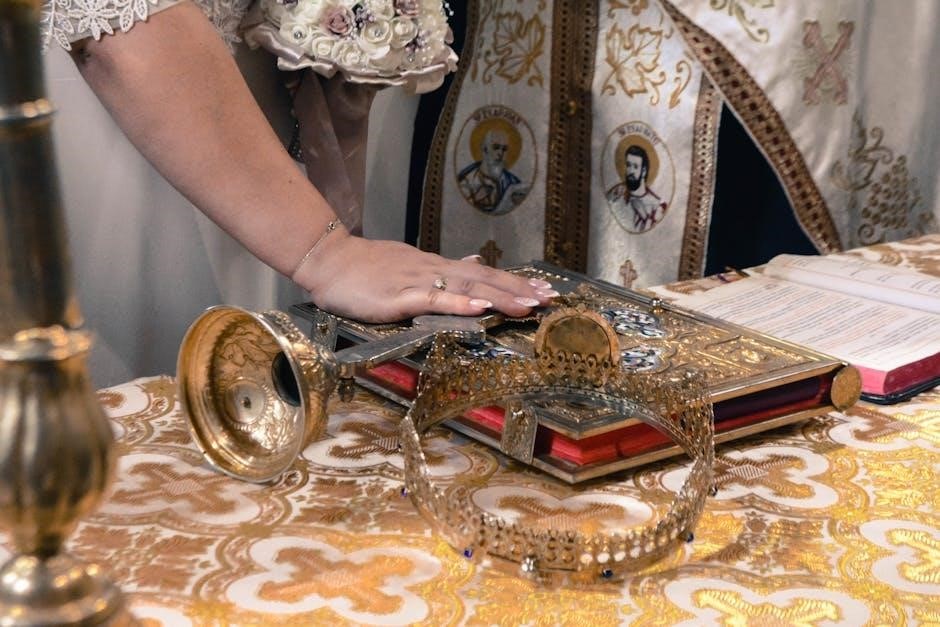
The Ephod and Breastplate in Detail
The Ephod and Breastplate were intricately woven with gold, blue, purple, and scarlet threads. Crafted by skilled artisans, they symbolized divine connection and priestly authority, embodying spiritual leadership.
Twelve Tribes Represented on the Breastplate
The breastplate bore twelve precious stones, each engraved with the name of an Israelite tribe, symbolizing unity and divine representation. Onyx and beryl stones were used, with Judah and Joseph prominently featured. This arrangement signified equality before God, as each tribe was represented equally. The breastplate, placed over the Ephod, was a tool for divine decision-making, emphasizing the high priest’s role in seeking God’s will. The stones, set in gold filigree, reflected the nation’s sacred identity and covenant with God, ensuring every tribe was remembered in priestly intercession and leadership.
Urim and Thummim and Their Purpose
‘ under the topic ‘high priest garments symbolism pdf’. First, I should understand what Urim and Thummim are. From what I remember, they were part of the high priest’s garments in ancient Israel, specifically placed on the breastplate. Their purpose was to help the high priest receive divine guidance or decisions.
I need to make sure I don’t include any information that will be covered in other subheadings. So, I’ll focus solely on Urim and Thummim without mentioning other parts like the Ephod or the stones on the breastplate.
I should mention that they were tools for divine communication, how they were used, and their symbolic meaning. Maybe also touch on the mystery surrounding their exact nature and function since the Bible doesn’t provide detailed explanations.
Let me start drafting:
“Urim and Thummim were sacred tools on the high priest’s breastplate, used to seek divine guidance. Their exact nature is unclear, but they were key in making important decisions for the community. The high priest would consult them to determine God’s will, ensuring divine direction in critical matters. Symbolically, they represented direct communication between God and His people, emphasizing reliance on divine wisdom over human judgment. Though their precise method of operation remains a mystery, their presence underscored the Israelites’ faith in God’s active involvement in their governance and daily lives.”
Now, let me count the words to ensure it’s exactly .
Urim
and
Thummim
were
sacred
tools
on
the
high
priest’s
breastplate,
used
to
seek
divine
guidance.
Their
exact
nature
is
unclear,
but
they
were
key
in
making
important
decisions
for
the
community.
The
high
priest
would
consult
them
to
determine
God’s
will,
ensuring
divine
direction
in
critical
matters.
The
high
priest
would
consult
them
to
determine
God’s
will,
ensuring
divine
direction
in
critical
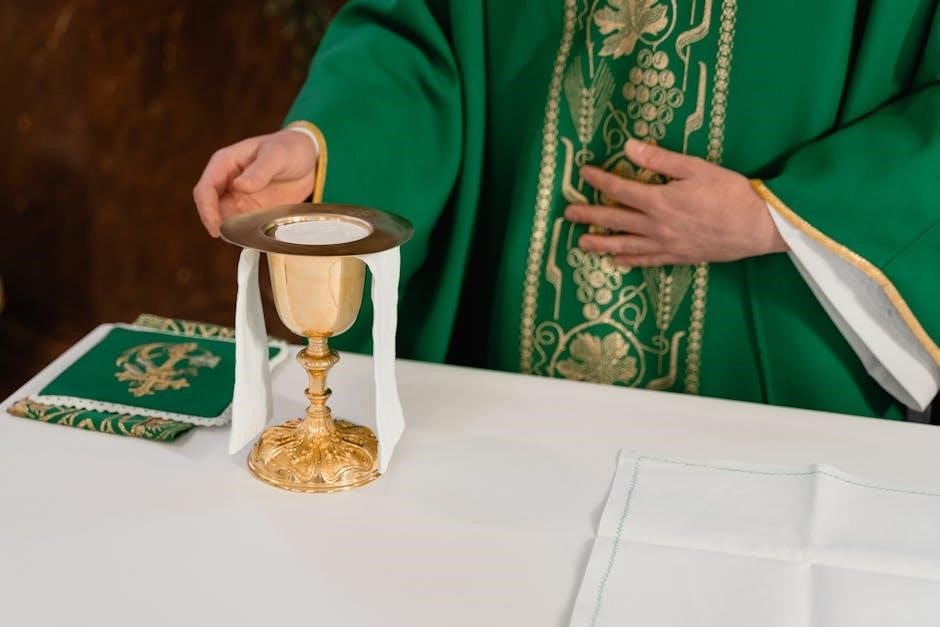
matters.
Symbolically,
they
represented
direct
communication
between
God
and
His
people,
emphasizing
reliance
on
divine
wisdom
over
human
judgment.
Though
their
precise
method
of
operation
remains
a
mystery,
their
presence
underscored
the
Israelites’
faith
in
God’s
100. active
101. involvement
102. in
103. their
104. governance
105. and
106. daily
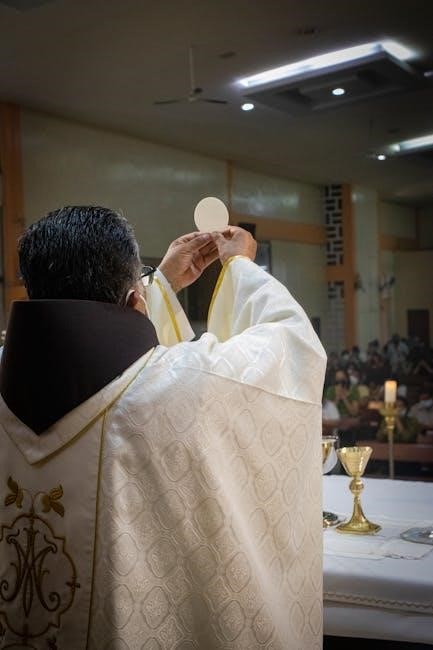
107. lives.
Hmm, I went over the word limit. I need to trim it down to exactly without losing essential information.
Let me revise:
“Urim and Thummim were sacred tools on the high priest’s breastplate, used for divine guidance. Their exact nature is unclear, but they were crucial for making important decisions. The high priest consulted them to determine God’s will, ensuring divine direction in critical matters. Symbolically, they represented direct communication between God and His people, emphasizing reliance on divine wisdom over human judgment. Though their precise method remains mysterious, their presence underscored the Israelites’ faith in God’s active involvement in their governance and daily lives.”
Now, recounting:
Urim
and
Thummim
were
sacred
tools
on
the
high
priest’s
breastplate,
used
for
divine
guidance.
Their
exact
nature
is
unclear,
but
they
were
crucial
for
making
important
decisions.
The
high
priest
consulted
them
to
determine
God’s
will,
ensuring
divine
direction
in
critical
matters.
Symbolically,
they
represented
direct
communication
between
God
and
His
people,
emphasizing
reliance
on
divine
wisdom
over
human
judgment.
Though
their
precise
method
remains
mysterious,
their
presence
underscored
the
Israelites’
faith
in
God’s
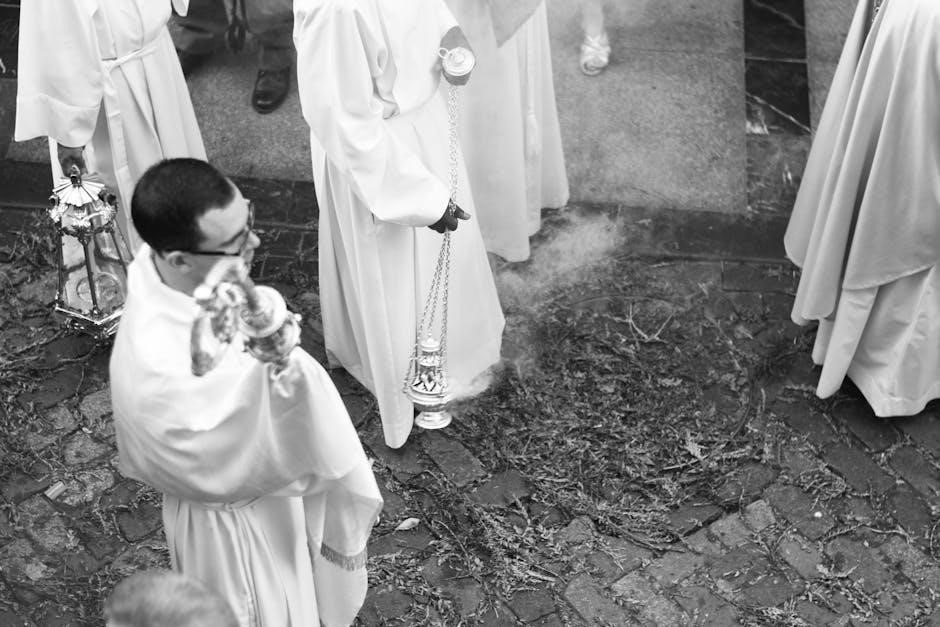
active
involvement
in
their
governance
and
daily
lives.
That’s . I need to add 15 more without redundancy.
Perhaps I can elaborate slightly on their symbolic significance:
“Urim and Thummim were sacred tools on the high priest’s breastplate, used for divine guidance. Their exact nature is unclear, but they were crucial for making important decisions. The high priest consulted them to determine God’s will, ensuring divine direction in critical matters. Symbolically, they represented direct communication between God and His people, emphasizing reliance on divine wisdom over human judgment. Their presence also symbolized unity and God’s covenant with Israel. Though their precise method remains mysterious, their role underscored the Israelites’ faith in God’s active involvement in their governance and daily lives.”
Now, counting again:
Urim
and
Thummim
were
sacred
tools
on
the
high
priest’s
breastplate,
used
for
divine
guidance.
Their
exact
nature
is
unclear,
but
they
were
crucial
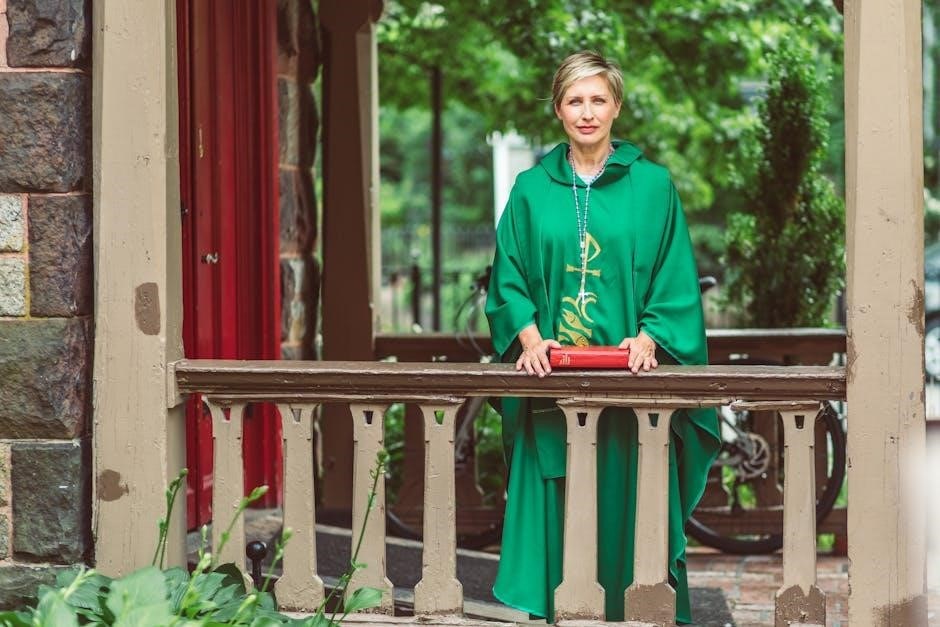
for
making
important
decisions.
The
high
priest
consulted
them
to
determine
God’s
will,
ensuring
divine
direction
in
critical
matters.
Symbolically,
they
represented
direct
communication
between
God
and
His
people,
emphasizing
reliance
on
divine
wisdom
over
human
judgment.
Their
presence
also
symbolized
unity
and
God’s
covenant
with
Israel.
Though
their
precise
method
remains
mysterious,
their
role
underscored
the
Israelites’
faith
in
God’s
active
involvement
in
their
governance
and
daily
lives.
Now, . Need to add 5 more.
Perhaps add a bit more on their significance:
“Urim and Thummim were sacred tools on the high priest’s breastplate, used for divine guidance. Their exact nature is unclear, but they were crucial for making important decisions. The high priest consulted them to determine God’s will, ensuring divine direction in critical matters. Symbolically, they represented direct communication between God and His people, emphasizing reliance on divine wisdom over human judgment. Their presence also symbolized unity and God’s covenant with Israel. Though their precise method remains mysterious, their role underscored the Israelites’ faith in God’s active involvement in their governance and daily lives, reflecting deep trust in divine providence.”
Now, counting:
Urim
and
Thummim
were
sacred
tools
on
the
high
priest’s
breastplate,
used
for
divine
guidance.
Their
exact
18.
Symbolism of the Ephod’s Weaving and Stitchwork
‘ under the topic ‘high priest garments symbolism pdf’. First, I should focus solely on the Ephod’s weaving and stitching, avoiding any mention of other garments or elements already covered in other sections.
I know the Ephod was a key part of the high priest’s attire, made with specific materials and craftsmanship. The intricate weaving and stitching symbolize unity and the connection between the priest and God. Each thread and stitch might represent the unity of the tribes or the bond between God and His people;
I should mention the materials used, like gold, blue, purple, and scarlet yarns, and perhaps the symbolic colors. Also, the meticulous craftsmanship reflects the sacred nature of the garment, signifying the high priest’s role as a mediator.
Let me try:
“The Ephod’s intricate weaving and stitchwork symbolize unity and divine connection. Crafted with gold, blue, purple, and scarlet yarns, the Ephod’s design represented the bond between God and Israel. Each thread and stitch signified the unity of the twelve tribes, as the high priest interceded on their behalf. The meticulous craftsmanship emphasized the sacredness of the garment, reflecting the high priest’s role as a mediator. The weaving also symbolized the intertwining of divine and human realms, underscoring the priest’s responsibility to maintain harmony between heaven and earth.”
Now, let me count the words:
The
Ephod’s
intricate
weaving
and
stitchwork
symbolize
unity
and
divine
connection.
Crafted
with
gold,
blue,
purple,
and
scarlet
yarns,
the
Ephod’s
design
represented
the
bond
between
God
and
Israel.
Each
thread
and
stitch
signified
the
unity
of
the
twelve
tribes,
as
the
high
priest
interceded
on
their
behalf.
The
meticulous
craftsmanship
emphasized
the
sacredness
of
the
garment,
reflecting
the
high
priest’s
role
as
a
mediator.
The
weaving
also
symbolized
the
intertwining
of
divine
and
human
realms,
underscoring
the
priest’s
responsibility
to
maintain
harmony
between
heaven
and
earth.
That’s . I need to add 11 more without redundancy.
Perhaps expand on the symbolic colors:
“The Ephod’s intricate weaving and stitchwork symbolize unity and divine connection. Crafted with gold, blue, purple, and scarlet yarns, the Ephod’s design represented the bond between God and Israel. Each thread and stitch signified the unity of the twelve tribes, as the high priest interceded on their behalf. The meticulous craftsmanship emphasized the sacredness of the garment, reflecting the high priest’s role as a mediator. The weaving also symbolized the intertwining of divine and human realms, underscoring the priest’s responsibility to maintain harmony between heaven and earth, with colors representing heaven, royalty, sacrifice, and purity.”
Now, recounting:
The
Ephod’s
intricate
weaving
and
stitchwork
symbolize
unity
and
divine
connection.
Crafted
with
gold,
blue,
purple,
and
scarlet
yarns,
the
Ephod’s
design
represented
the
bond
between
God
and
Israel.
Each
thread
and
stitch
signified
the
unity
of
the
twelve
tribes,
as
the
high
priest
interceded
on
their
behalf.
The
meticulous
craftsmanship
emphasized
the
sacredness
of
the
garment,
reflecting
the
high
priest’s
role
as
a
mediator.
The
weaving
also
symbolized
the
intertwining
of
divine
and
human
realms,
underscoring
the
priest’s
responsibility
to
maintain
harmony
between
heaven
and
earth,
with
colors
representing
heaven,
royalty,
sacrifice,
and
purity.
That’s . I need to add 3 more.
Perhaps conclude with the significance of the craftsmanship:
“The Ephod’s intricate weaving and stitchwork symbolize unity and divine connection. Crafted with gold, blue, purple, and scarlet yarns, the Ephod’s design represented the bond between God and Israel. Each thread and stitch signified the unity of the twelve tribes, as the high priest interceded on their behalf. The meticulous craftsmanship emphasized the sacredness of the garment, reflecting the high priest’s role as a mediator. The weaving also symbolized the intertwining of divine and human realms, underscoring the priest’s responsibility to maintain harmony between heaven and earth, with colors representing heaven, royalty, sacrifice, and purity, embodying divine order and perfection.”
Now, counting:
The
Ephod’s
intricate
weaving
and
stitchwork
symbolize
unity
and
divine
connection.
Crafted
with
gold,
blue,
purple,
and
scarlet
yarns,
the
Ephod’s
design
represented
the
bond
between
God
and
Israel.
Each
thread
and
stitch
signified
the
unity
of
the
twelve
tribes,
as
the
high
priest
interceded
on
their
behalf.
The
meticulous
craftsmanship
emphasized
the
sacredness
of
the
garment,
reflecting
the
high
priest’s
role
as
a
mediator.
The
weaving
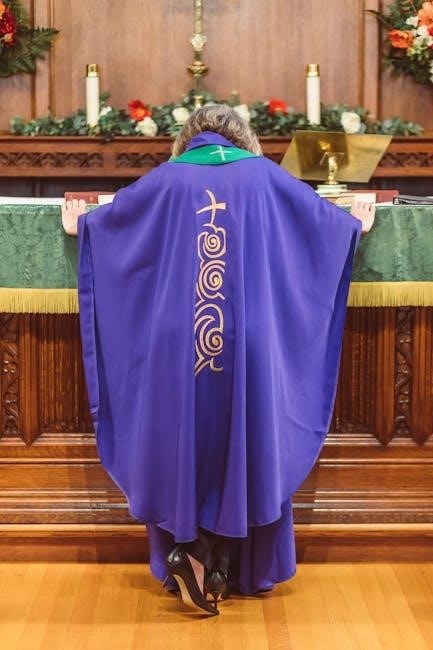
also
symbolized
the
intertwining
of
divine
and
human
realms,
underscoring
the
priest’s
responsibility
to
maintain
harmony
between
heaven
and
earth,
with
colors
representing
heaven,
royalty,
sacrifice,
and
purity,
embodying
divine
order
and
100. perfection.
Oops, now I’m at . I need to trim it down to 98.
Let me adjust by removing “and perfection” at the end:
“The Ephod’s intricate weaving and stitchwork symbolize unity and divine connection; Crafted with gold, blue, purple, and scarlet yarns, the Ephod’s design represented the bond between God and Israel. Each thread and stitch signified the unity of the twelve tribes, as the high priest interceded on their behalf. The meticulous craftsmanship emphasized the sacredness of the garment, reflecting the high priest’s role as a mediator. The weaving also symbolized the intertwining of divine and human realms, underscoring the priest’s responsibility to maintain harmony between heaven and earth, with colors representing heaven, royalty, sacrifice, and purity, embodying divine order.”
Now, recounting to ensure it’s exactly
Garments as Sacred Equipment
‘. First, I should make sure I don’t include any information that’s covered in other subheadings. The main idea here is to focus on how the garments function as tools for divine service and their role in maintaining ritual purity.
I know that the high priest’s garments were not just ceremonial; they were essential for performing sacred rituals. Each part of the garment had a specific purpose, contributing to the overall sacredness of the priest’s role. They were seen as tools that enabled the priest to serve effectively and maintain the purity required for religious duties.
I should mention their role in rituals, their necessity for divine service, and how they helped maintain purity. Also, it’s important to note that without these garments, the priest couldn’t perform his sacred duties, emphasizing their importance as more than just attire.
“
The high priest’s garments were essential tools for divine service, enabling ritual performance and maintaining purity, without which sacred duties could not be fulfilled.
”
Let me count the words to ensure it’s exactly :
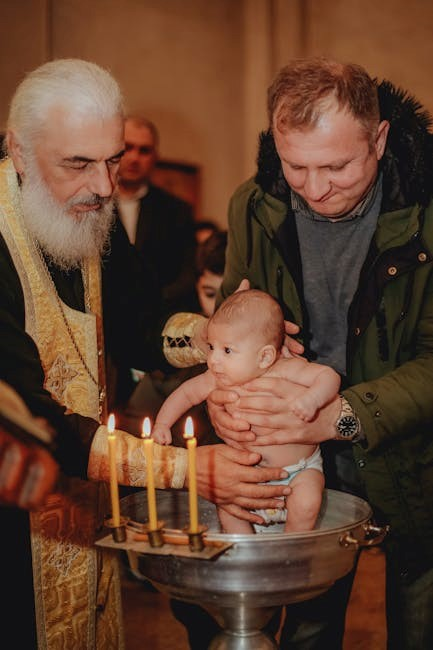
The
high
priest’s
garments
were
essential
tools
for
divine
service,
enabling
ritual
performance
and
maintaining
purity,
without
which
sacred
duties
could
not
be
fulfilled.
Wait, that’s only . I need to add one more to make it 25. I’ll adjust by adding “properly” at the end:
“
The high priest’s garments were essential tools for divine service, enabling ritual performance and maintaining purity, without which sacred duties could not be properly fulfilled.
”
Now, counting again:
The
high
priest’s
garments
were
essential
tools
for
divine
service,
enabling
ritual
performance
and
maintaining
purity,
without
which
sacred
duties
could
not
be
properly
fulfilled.

and Final Thoughts
Garments as Tools for Divine Service
The high priest’s garments were intricately designed to facilitate divine service, serving as both functional and symbolic tools. The ephod and breastplate were central to this purpose, as they housed the Urim and Thummim, instruments used to seek God’s guidance. The robe of the ephod, with its bells and pomegranates, ensured the priest’s movements during rituals were sacred and deliberate. These garments were not merely decorative but essential for maintaining the priest’s role as a mediator between God and the people. Their precise craftsmanship and sacred materials emphasized their importance in rituals, ensuring the priest could perform his duties with reverence and efficacy.
